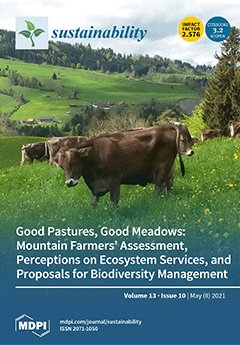Jiuquan City is a typical ecologically fragile area in the arid areas of Northwest China, and unreasonable human activities directly affect the regional ecological security. Scientifically, it is necessary to construct an ecological landscape pattern on the basis of ecological security evaluation. This
[...] Read more.
Jiuquan City is a typical ecologically fragile area in the arid areas of Northwest China, and unreasonable human activities directly affect the regional ecological security. Scientifically, it is necessary to construct an ecological landscape pattern on the basis of ecological security evaluation. This paper selected evaluation factors based on the perspective of “environmental base and human interference”, used spatial principal component analysis (SPCA) to comprehensively evaluate the regional landscape ecological security, and used the minimum cumulative resistance (MCR) model to construct the regional ecological security pattern. The results show that the overall ecological security level of the study area is low, and the area with a moderate safety level and below is 122,100 km
2, accounting for 72.57% of the total area of the study area. The total area of the identified ecological source area is 6683 km
2, the spatial distribution is extremely uneven, and it is extremely concentrated in the southern region; 32 ecological corridors with a total length of 3817.8 km are identified, of which corridor NO. 1–4 run through the Qilian Mountains, 11 oasis areas, and 14 nature reserves. The length of ecological corridors is 1376.1 km, accounting for 36.04% of the total. Forty-two ecological nodes are identified, and the central corridor area is more distributed; four ecological restoration zones are divided, including an ecological conservation zone, ecological improvement zone, ecological control zone, and ecological restoration zone, with areas of 34,380.3 km
2, 61,884.4 km
2, 21,134.4 km
2, and 50,648.3 km
2, respectively. Through the delineation of the urban ecological network pattern composed of source areas, corridors, and nodes, as well as the delineation of ecological restoration zones, the ecological security level of the study area will be effectively improved. Furthermore, a new method of ecological restoration zoning will be used, hoping to provide a useful reference for improving the quality of the ecological environment in arid areas and optimizing the spatial pattern of the land.
Full article





